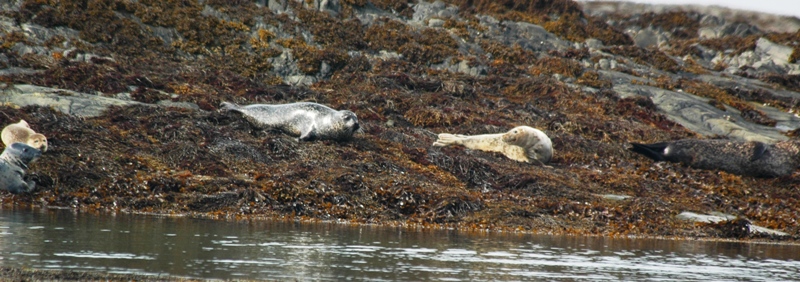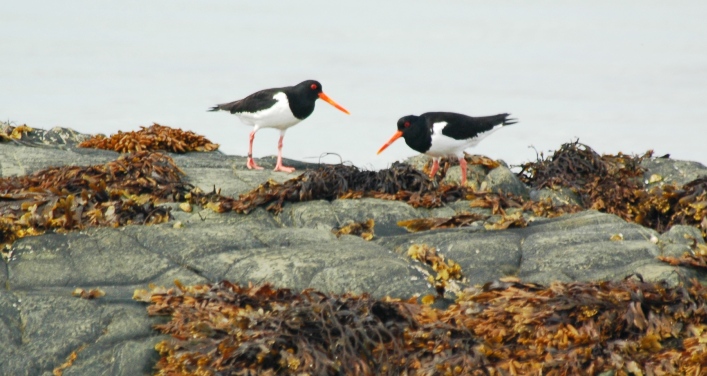While many of us dream of seeing exotic wildlife in far off lands, the diversity of creatures that can be found in the UK is often overlooked.
We have a fantastic array of environments for wildlife to thrive on our island. This includes the majestic shy deer in the forests; splendid dolphins jumping from the waters around our lengthy coastline; magnificent peregrine falcons swooping our city centres and also butterflies and other small creatures that can be found on numerous nature trails.
In fact, a wildlife spotting holiday in the UK provides a great chance to see many indigenous species in their home environment, whilst exploring the local area and making the most of some great photo opportunities.
With so many wonderful locations to visit and such a diverse range of wildlife to see, here are six top UK destinations where you are sure to see a vast array of wildlife.
- Lundy Island – Located 12 miles off the coast of Devon, Lundy Island is a 2 hour boat ride from Bideford and Ilfracombe which sails 4 times per week in the summer. The island is a Site of Special Scientific Interest (SSSI) and the seas that surround Lundy were designated as England’s first Marine Conservation Zone. Visitors can spot over 200 species of birds including puffins, the black-legged kittiwake and a small population of peregrine falcons on the 3 miles long by half a mile wide environment. Owned by the National Trust, Lundy also has goats in addition to wild deer and ponies and is ideal for wildlife spotters looking to get off the beaten track.
- Cairngorms National Park – Found in the north-east of Scotland and only established in 2003, the Cairngorms National Park consists of 1,748 sq miles of stunning landscapes and diverse wildlife. The snow topped mountains, ancient forests, green fields and dramatic moorlands provide the perfect habit to see a variety of animals. These include red squirrels, majestic ospreys, badgers, deer, wildcats in the vast forests and also the only herd of reindeer found in the British Isles. In fact the Cairngorms National Park hosts 25% of threatened and endangered species in the UK and for wildlife enthusiasts who want to see rare creatures all year round, it is one of the best places to visit.
- Skomer Island – Wales is home to some of the most stunning landscapes and wildlife groups in the UK and Skomer Island, which is off the coast of Pembrokeshire, has wildlife in abundance. Only 250 people per day can get to the 2.92 sq km island on the boat from Martin’s Haven which sails from April to October. Skomer has a third of the world’s total population of manx shearwaters and it also boasts the largest Atlantic puffin colony in the south of the UK, while the Skomer vole is unique and can only be found on the island itself. For photographers there is little better than Skomer and the Wildlife Trust of South and West Wales has regular photography workshops on the Island run by a professional photographer. Make sure you keep your eye out for dolphins and porpoises on the journey to the island, along with seal pups later in the season in Autumn.
- New Forest – Set in the county of Hampshire, the New Forest National Park has a wide range of native and past-native wildlife. This includes European otters, foxes, 5 species of deer, 15 species of owls and plenty of New Forest ponies, donkeys and cattle which can be seen roaming freely. The New Forest Park is great for visiting all year round and was originally established as a hunting ground for King William I back in the 11th Century due to its diverse environment which contains forests, heathland and bogs. With easy rail links from London, The New Forest is a popular choice for wildlife lovers looking for a weekend break.
- Norfolk Broads – As far as wetlands go, the Norfolk Broads are among the best in the UK. With miles of waterways and natural wildlife they represent a fantastic chance of snapping some beautiful photographs. Opportunities of seeing kestrels, herons and mallards are plentiful, along with rarer sightings. Why not hire a kayak or canoe and explore the hidden creeks and corners of the Broads for some of the best ‘up close’ wildlife spotting. The Broads is the only place in the UK that provides a natural breeding ground for common cranes that can be seen specifically in Hickling Broad. Furthermore visitors can take a day trip to nearby Norwich where the RSPB view point allows you to look at peregrine falcons up close that nest in the 900 year old Norwich Cathedral. Being the fastest animal in the world reaching speeds of 200 mph, the opportunity to view these spectacular creatures is one not to be missed!
- Farne Islands – Off the coast of Northumberland, the Farne Islands are home to one of the biggest seabird colonies in Britain. The islands features 23 species of birdlife including puffins, Artic terns and herring hulls, along with the Aleutian tern which was recorded here in the 1970’s when it was the first time it had ever been seen outside of the North Pacific Ocean. There is also a native rabbit population on some of the islands, along with a large colony of grey seals. There are daily boat trips to and around the islands from the picturesque fishing village of Seahouses that run throughout the summer months. Even though the islands are famed for their bird and wild life, there is also a historical significance with chapels and monasteries dating back over 1000 years.
The UK is a perfect holiday destination for wildlife lovers and with the diversity of creatures living naturally around Britain, you won’t be stuck for animals and birdlife to photograph. What better way to get up close with nature than to rent a cottage where you can enjoy a whole new array of wildlife from your front door!



I am sure that most of us don’t really appreciate how fortunate we are in having such diversity of wildlife and birdlife in this country. Of course, it is necessary to keep your eyes (and ears if you are able to distinguish birds by their calls) open to be aware of what is around us.
Our current visitors, and the family arriving next week, have arranged to go and see the black grouse lekking. The North Pennines Black Grouse Recovery Project (www.blackgrouse.info/recovery/northpenn.htm) has been running for some time now with some success in building the numbers of this iconic bird which is on the ‘Red’ list of species of high conservation concern because of its serious decline.
Even closer to home, we had an RSPB survey on the farm a few years ago when 55 species of bird were seen over 4 visits. Our current visitors saw a Redpoll, amongst others, this morning from the cottage window – so that would make 56! We also get roe deer, hares – and, of course, “Stan” the stoat – in addition to hundreds of rabbits.